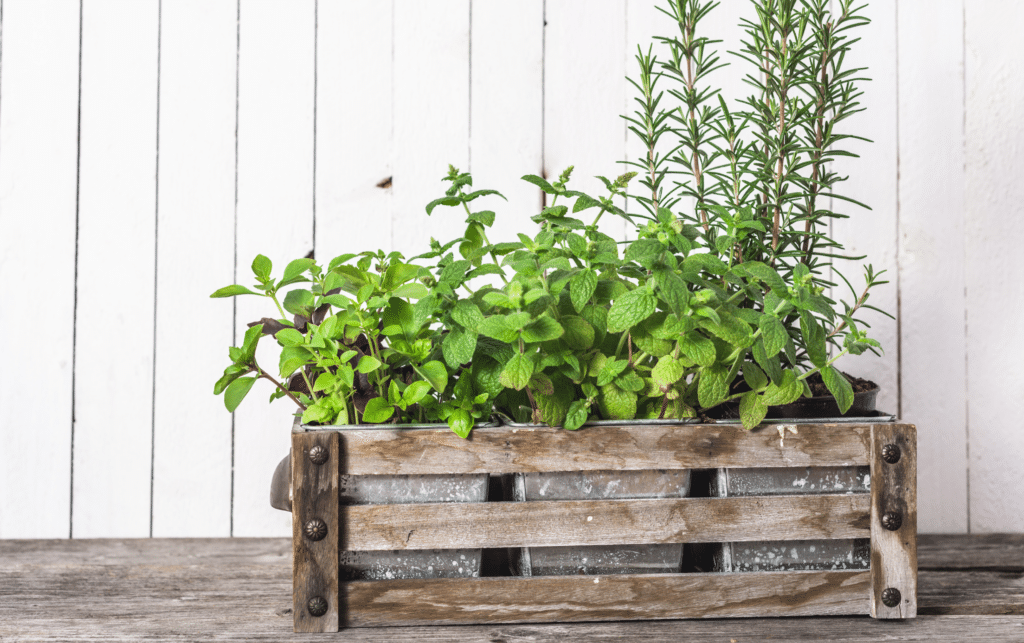Do you crave a more garden-to-table lifestyle? A little sprinkle of fresh herbs can boost the flavor of any dish and bring more nutritious ingredients to your table.
Getting Started
SOIL: Most herbs thrive in regular garden soil as long as it has good drainage. You’ll want to use soil that has good water retention properties for the best results.
SUN: Most herbs need full sun, so pick the right location — one that receives at least 6 to 8 hours a day of full sun. The combination of sun and lean soil cause the flavor of the herbs to grow in intensity.
WATER: Most herbs need water about once per week. If the soil’s surface feels damp, it does not need to be watered yet. If you insert a finger into the soil and it feels dry to a depth of 1 inch, your herbs need water.
Choose Your Herbs
ROSEMARY is an aromatic herb. It’s often used to flavor dishes like soups, salads, and stews.
BASIL is an herb in the mint family with a fragrant, sweet smell and peppery taste. Basil is the main ingredient in pesto and is also a favorite in tomato-based sauces.
SAGE has a strong herbal aroma and earthy flavor. It works well when combined with other herbs and complements foods like meat and seafood.
MINT comes in wide varieties and adds sweet herbal flavor to whatever you cook. It’s widely used in Middle Eastern and Greek dishes and is a favorite for herbal tea.
THYME is a fragrant herb with small, aromatic leaves and thin, woody stems. It adds a savory note to soups, grilled meats, and vegetables.
GARDENING TIP:
Harvest herbs when they are dry. They are rich in essential oils and are most fragrant between mid-morning and early afternoon.
Gardening Methods
Raised Beds: The elevation makes your herbs more accessible and the soil less susceptible to unwanted weeds and pests.
Window Boxes: Window boxes are an excellent way to add interest to your deck or balcony and can easily be brought indoors over the winter.
Pots: These are ideal for smaller outdoor spaces. You can intersperse your potted herbs with flowers for added visual appeal.
Vertical Garden: These vertical plant structures can be as small as a picture frame or as large as an entire wall and can add color and texture to your space.
Click here to learn how to take herbs from your garden and turn them into healthy RM-approved recipes with RM Culinary Chef, Jan D’Atri.

















